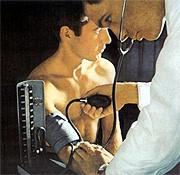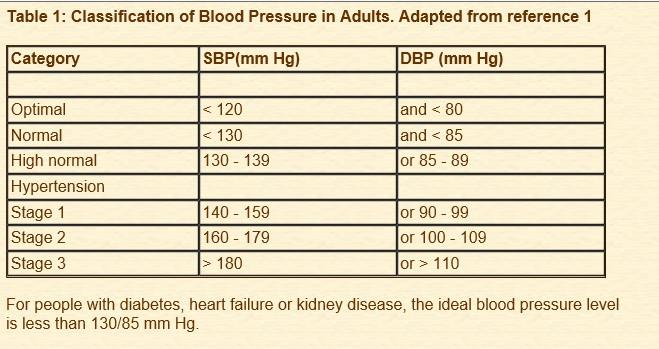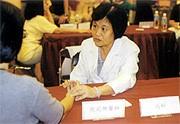Based on the four examination skills, TCM practitioners will diagnose hypertension according to its clinical symptoms and further specify it by the disharmony patterns displayed by individuals. As TCM believes that at various stages of a disease, specific disharmony patterns are present which require different types of therapy. That is why two individuals with the same disease may be treated very differently by their TCM practitioners. Common disharmony patterns of hypertension are:
1. Hyperactivity of liver-yang
Main features: distending pain in the head, dizziness, blurred vision, irritability, poor sleep, flushed face, bitter taste in mouth, a red tongue with thin yellow coating, and the pulse is taut and forceful. There may also accompany rib-side discomfort.
Analysis: liver hyperactivity means the organ can’t play its regulatory role properly and thus results in the distending headache, dizziness and blurred vision; liver fire irritates the spirit that results in the irritability and poor sleep; while the rib-side discomfort, flushed face and bitter taste are caused by fire transformed from stagnated qi in the liver and gallbladder. Other signs like the red tongue with thin yellow coating, taut and forceful pulse are the indications of liver-yang hyperactivity. This pattern usually occurs in the early stage of hypertension.
2. Yin deficiency of liver and kidney
Main features: dull pain in the head, dizziness, blurred vision, buzzing of the ears, hot sensation in the chest, palms and soles, lumber soreness and lower leg weakness. The tongue is red with little fur, and the pulse is thready or thready and rapid.
Analysis: yin deficiency results in relatively yang hyperactivity, when this affects the head region, there will be dull pain in the head, blurred vision and dizziness; yin deficiency tends to generate virtual fire, and thus results in the hot sensations; kidney is housed in the lumbar and it also dominates the bones, so the lumbar soreness and lower leg weakness are related to kidney weakness; other signs like the red tongue with little fur, and thready pulse are coincided with yin deficiency of liver and kidney, the rapid pulse means the internal body is heated. This pattern usually occurs in the middle stage of hypertension.
3. Deficiency of both yin and yang
Main features: dizziness, poor memory, skinny, mouth dryness, hot sensation in the chest, palms and soles, general weakness, spiritual fatigue, breath shortness, night frequency, lumbar soreness, and knee weakness. The tongue is pale, and the pulse is thready and forceless.
Analysis: kidney essence is an important component of body’s yin, and due to its depletion, the whole body is under-nourished. The brain can’t function normally, and thus develops the dizziness and poor memory; the muscles are wasting and thus becomes skinny; insufficiency of fluid production and thus has the mouth dryness; yin deficiency creates virtual fire, and thus has the hot sensations. On the other hand, yin deficiency leads to a gradual depletion in body’s yang, and so has the spiritual fatigue and breath shortness; while night frequency, lumbar soreness and knee weakness are the indications of kidney deficiency; other signs like the pale tongue, thready and forceless pulse are coincided with yin and yang deficiency. This pattern usually occurs in the late stage of hypertension that has last for a long time. Individuals are mostly older, have persistent high blood pressure and with complications in the heart, brain or kidney organs.
4. Phlegm and dampness accumulation
Main features: distending and heaviness sensations in the head, dizziness, chest stuffiness, nausea, poor appetite, sleepiness, greasy tongue coating and taut and rolling pulse.
Analysis: the head orifices are obstructed by the excess dampness and phlegm, and thus cause the distending headaches, dizziness and sleepiness; phlegm and dampness accumulation is often associated with dysfunction of the middle burner, so there is chest stuffiness and nausea; since spleen and stomach are located in the middle burner, and so affected the appetite; the white greasy tongue coating, and taut and rolling pulse are the indications of excess phlegm and dampness. This type of individuals is often obese, not physically active, and they tend to have inefficient digestion and absorption, or a poor appetite.
5. Blood stasis blocking collaterals
Main features: dizziness, stabbing pain in the head or chest, chest stuffiness, limb numbness, purplish tongue and lips, or purple spots on the tongue, thready or hesitant pulse.
Analysis: persistent high blood pressure tends to develop blood stasis and impede blood flow, which cause the dizziness, stabbing pain in the head or chest, chest stuffiness and limb numbness; the purplish lips, tongue and pulse signs all indicate that blood stasis has developed. This pattern usually occurs in the late stage of hypertension that accompanies organ damages.
6. Asymptomatic hypertension
Hypertensive individuals feel fine and have not symptom. During examination, the tongue may be red or pale red color, the pulse is taut and thready or taut and rolling.
Individuals should be differentiated from conditions where the hypertension is caused by a specific disease process, secondary hypertension is more frequently seen in:
- Individuals with clinical or biochemical features of a specific disorder. For example, abnormal blood hormone levels, such as catecholamines might suggest an endocrine disease of pheochromocytoma.
- Young age (30-years-old and under)
- Accelerated hypertension (severe cases of hypertension) suggests cardiovascular causes like aneurysm.
- Troublesome hypertension (hypertension that does not respond to medication) suggests renal causes like congenital polycystic kidneys.
Note: If a TCM practitioner suspects there might be a serious problem that Chinese medicine alone cannot treat, he or she will recommend the individual to see a western doctor for further follow up.





